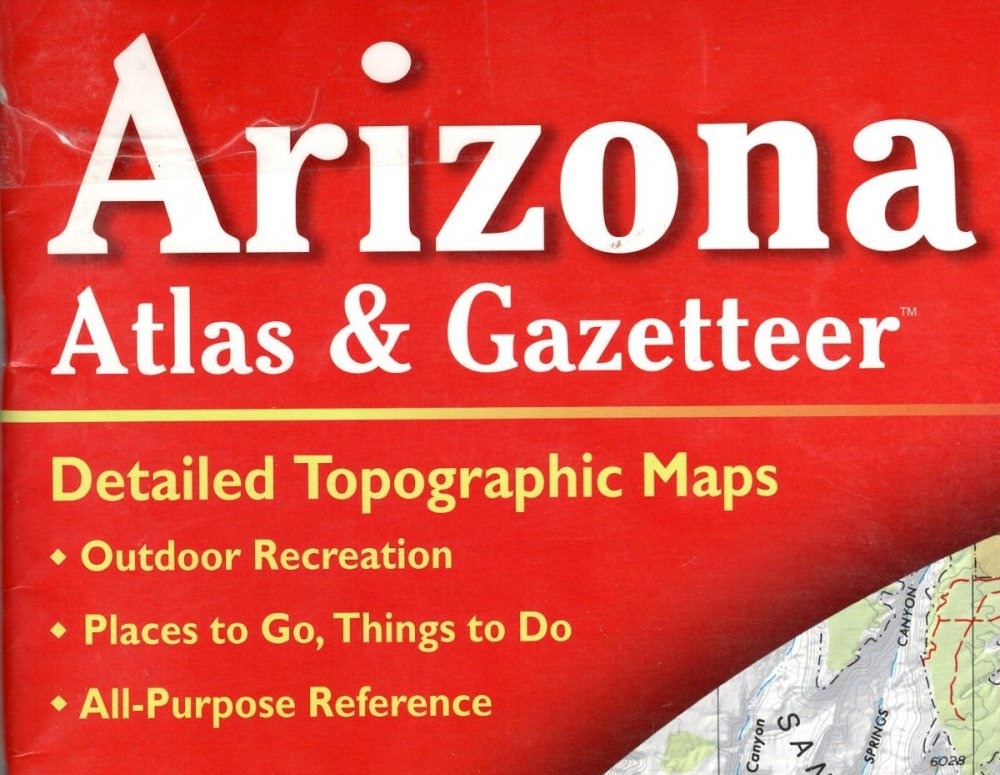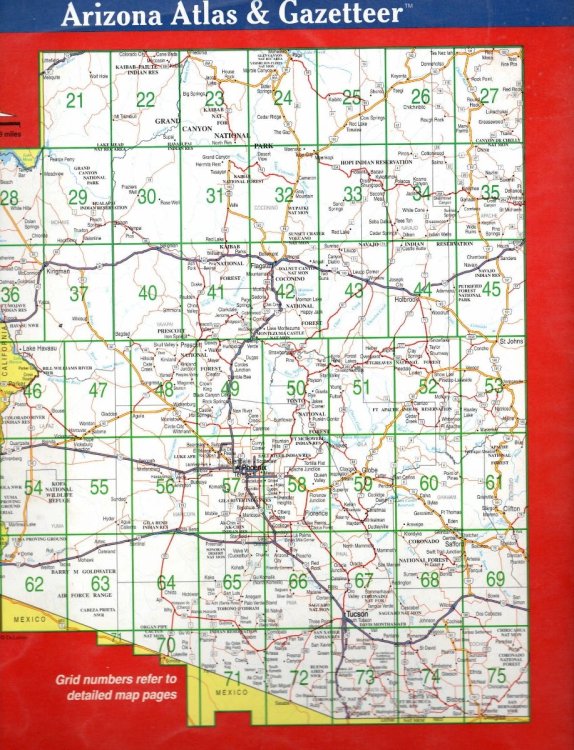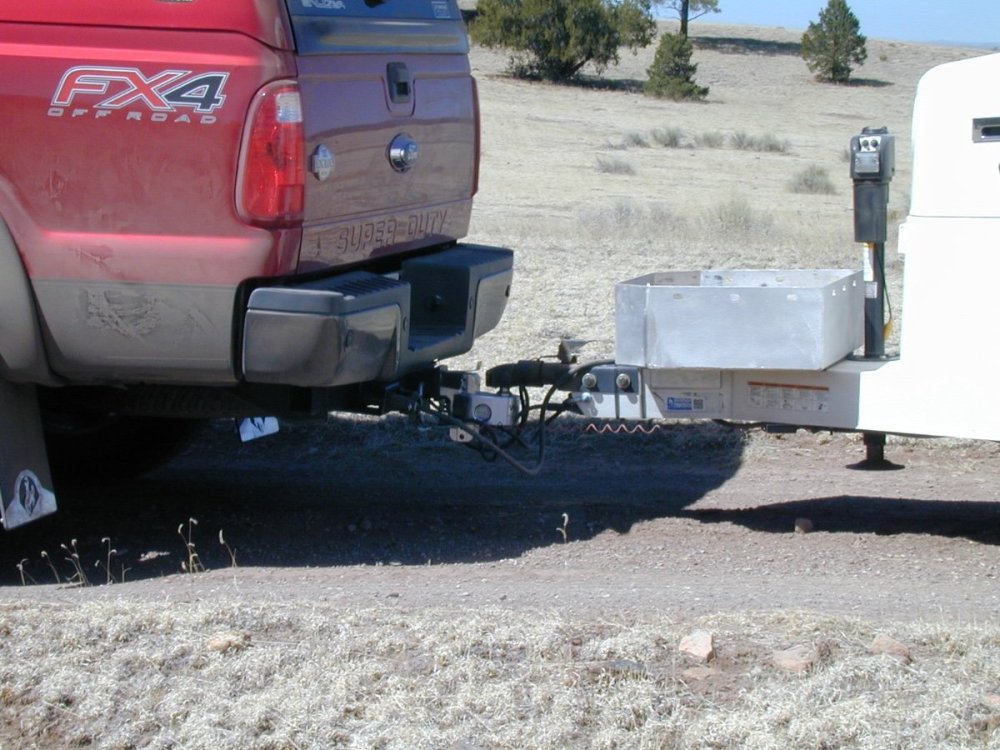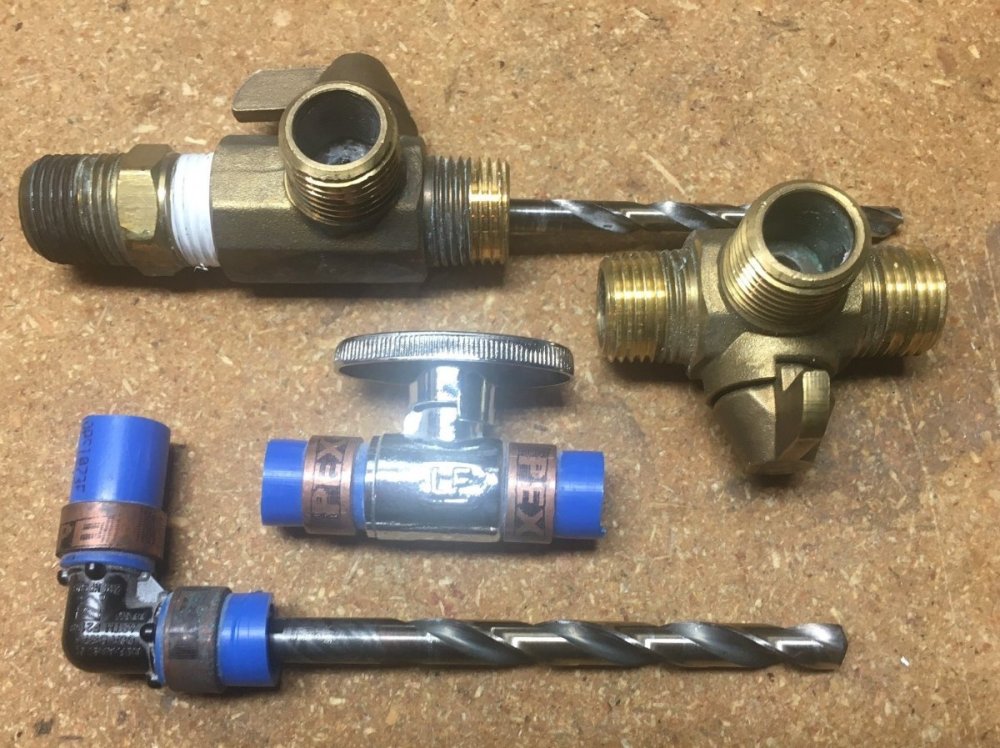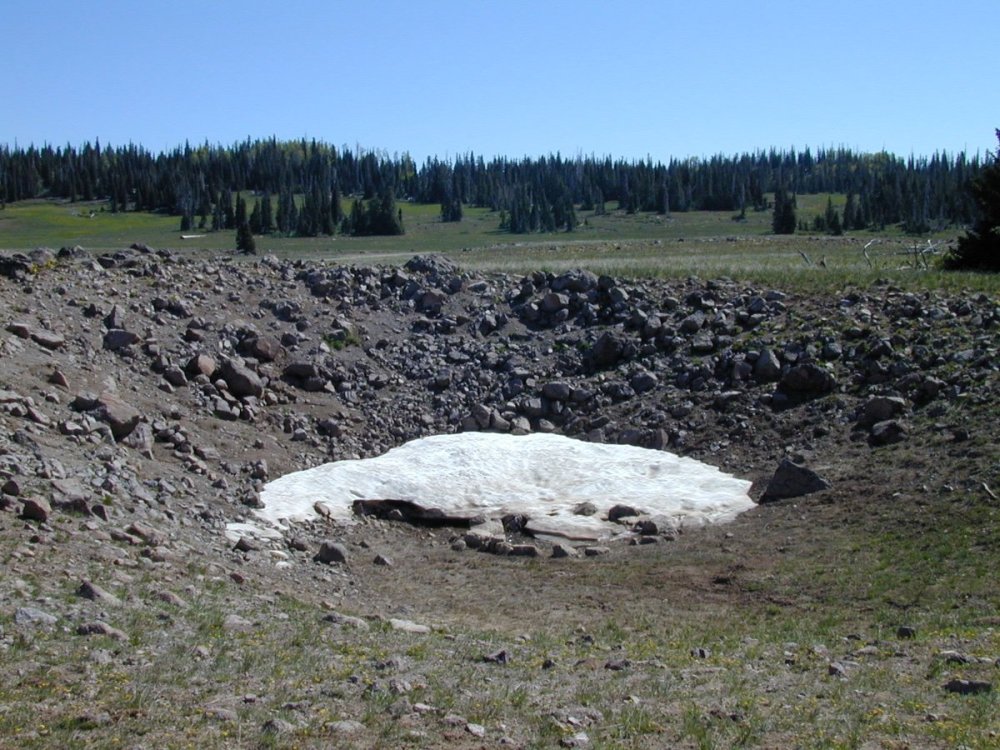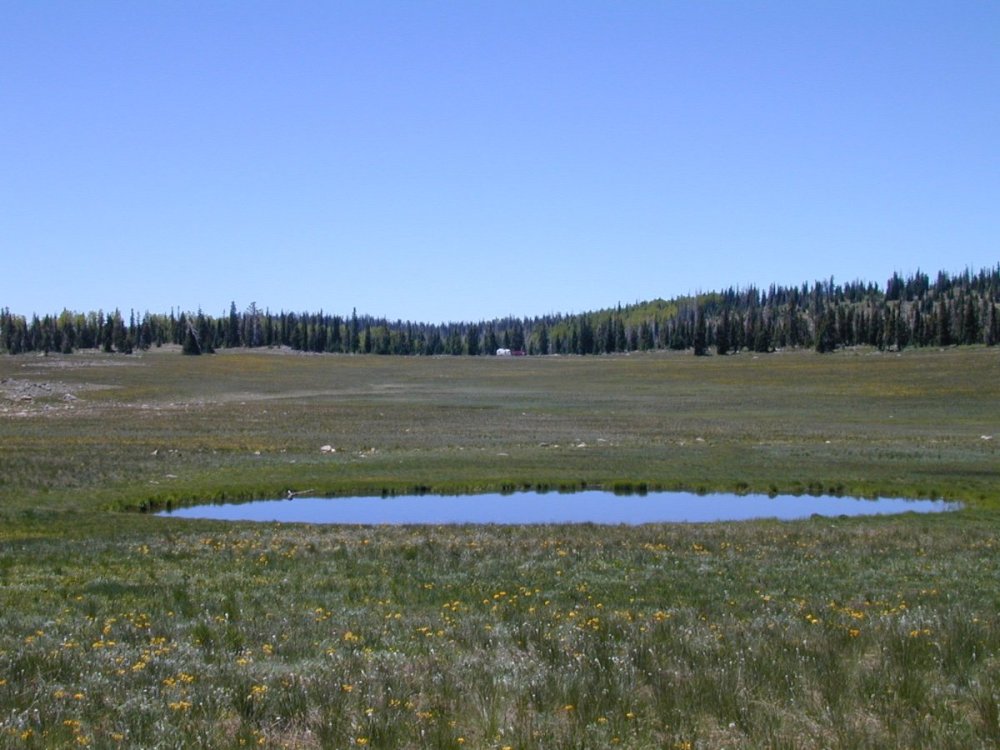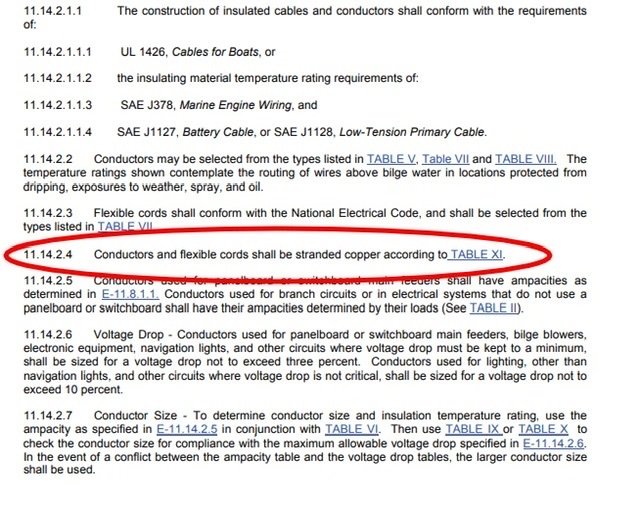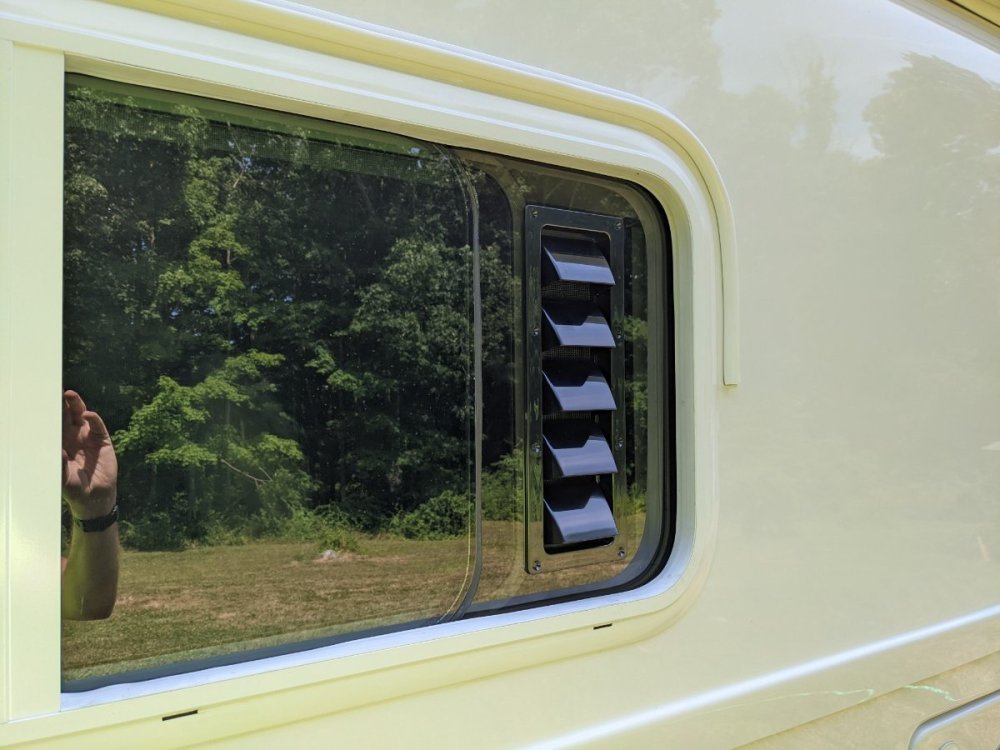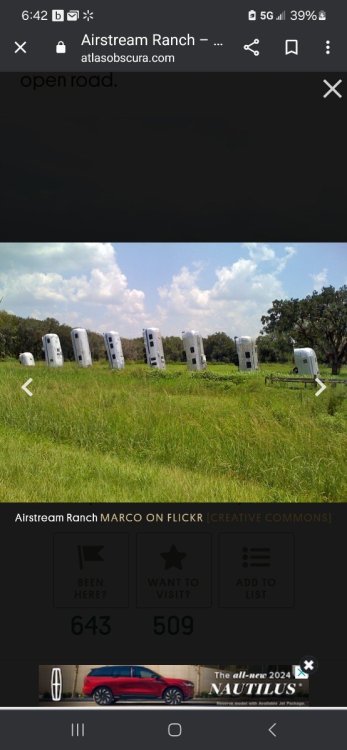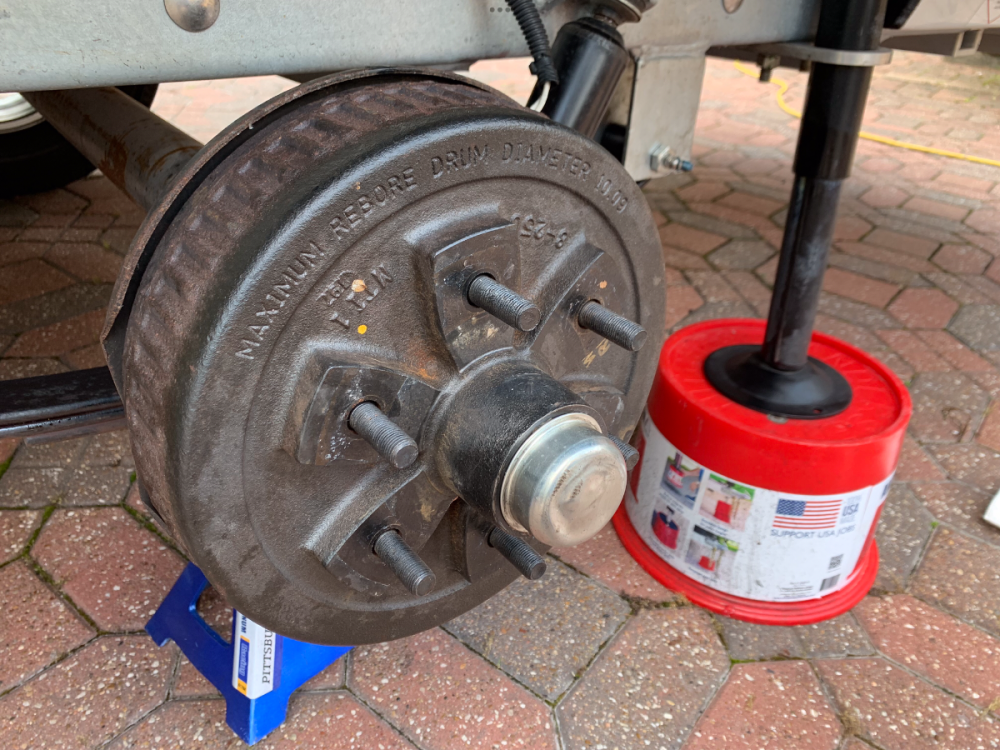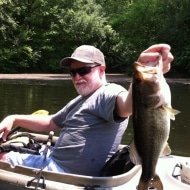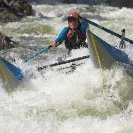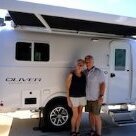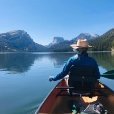Leaderboard
Popular Content
Showing content with the highest reputation on 03/23/2024 in all areas
-
OK, First day on the road with the new ALCAN springs and can say there was no appreciable difference in ride. That said, I did note there was slightly less side-to-side rocking of the trailer as we traveled down low speed side roads which is where I would normally detect that in the past. ALCAN warns that the 7/8 U Bolt nuts need to be checked and re-torqued at 50/100/600 miles. I can attest that the nuts certainly needed tightening. I have one more tightening to do. Easy to do BTW. U bolts are easily accessible just laying down next to the trailer. Use 7/8" deep set socket and set torque setting to 90 ft lbs. Ten minute job. Nothing inside the trailer appears to have been negatively affected by the upgraded springs thus far. I'll continue to report as we move along.6 points
-
While I like having Apple Maps, Google Maps and Waze telling me where to go while driving, there’s nothing better than paper maps that can be spread out and studied. You can see where you are, where you need to go, how to get there and any interesting detours along the way. Maybe four decades in the Army shaped my view. Carol usually has the atlas or some other map open while we’re driving along. It gives you the big picture rather than the small snapshot on the electronic vehicle display. Mike5 points
-
I find WAGO Lever Nuts are extremely useful when testing or troubleshooting circuits and combining different AWG sizes. So to answer your question, I use the 221-4xx series up to 12 AWG and the 221-6xx series up to 10 AWG. I also use tape on the levers just like I do on wire nuts. Mossey5 points
-
I admit to being spoiled living in the Western USA with Federal Public Lands everywhere, it seems. Especially where we like to visit and camp. Settlers in the 19th Century needed lower elevations with water. Dry areas without available water, good soil or long Winters and short growing Seasons were not ideal homestead properties. Good for those of us who enjoy exploring, rock hunting, wild life exposure, fishing, hiking and just sitting outside with few others within eye sight. First and the BEST option: DeLorme Atlas of the State you would like to visit, or know more about a State you may want to go further into the Public Domain. BLM, National Forest, National Grasslands and all other possibilities at your flipping through the pages of an Atlas of choice. The year of the Atlas does not matter. Most of the roads off the paved roads have been there since the Oregon Trail, Logging and Mining. Ranchers dropping livestock off for Summer grazing. Fall Hunting Season is a big business for small western remote communities. The local Forest Service maintains the main unpaved roads and when money permits... the side roads and fence for grazing leases for cattle. I pulled out Arizona and scanned the important details. Also on the back of the Atlas, you find an area you may want to Explore... the map page number is at your finger tips. We carry those Atlases that we may be near or going to. You never know. Also mark the camping spots on the map, so we can return. On the return... we can then expand our travel on the, often, very good Forest Service roads. The Oliver has high clearance and 16 inch tires. If your Tow Vehicle had 2wd you may be limited on... some... but not many side roads. If you have 4x4 there is almost unlimited options in some areas. Arizona has lots of people living in the Forests... and I just pulled it out as it was handy. But... there are places in the mountains, but expect lots of locals on the weekends and holidays. What questions do you have? Someone may be able to help you. What about the Midwest and Eastern States? Any advice as to general references. Saddle up your Oliver Elite and hitch your multiple Horse Power Tow Vehicle and get with it.4 points
-
I wanted to reach out to everyone regarding this issue. We have been made aware of the issue and are currently investigating. At this time it appears to be a single incident but we will be continuing our investigation.4 points
-
I have only used the same sizes as mossemi above for 24-12 AWG and 10 AWG (stranded in RV and boat). I don't know if there are larger ones available or not. Generally the Wago splices are in junction boxes or fixture enclosures. Crimp connectors for #8 and larger are on binding posts / bus bars and usually have some sort of protective cover over them...3 points
-
There have been plenty of other discussion and "how to do it" on most of my recent modifications. In fact I relied to a great extent on member posts on what they did and where they got the parts to do it. The modifications I made, in no particular order are: - Installed quarter turn PEX shut-off valves in the hot and cold water PEX piping just prior to the outdoor shower. - Insulated the heck out of the space below the drivers side bunk bed with adhesive Reflectix. Two to four layers, depending on the available space - Used the well documented John Davies method of providing interior wall bump protection and anti breath condensation during cold weather use. (I had a wet mattress last Elk season just from my breath condensing on the wall near my face.) - Modified the bathroom heating duct with rigid flex ducting and rigid elbows to greatly improve the air flow. Almost doubled the velocity of exiting air! - Insulated the heck out of the undersink area of the bathroom, using the aforementioned adhesive backed Reflectix. Four to six layers in this case. - Used pipe insulation to cover all exposed PEX piping in the undersink area of the bathroom. - Installed a fixed bathroom faucet in the bathroom. - Installed a Scanvik Shower Mixer and shower hose to replace the prior "extendable" shower. - Installed shut-off valves in all four water connections under the bathroom sink. - Installed a marine deck hatch in place of the prior washcloth rack. Installed the pump switch in the lower left corner of the deck hatch. Photos will also show a prior modification where I replaced the kitchen faucet with one more suited to how I do dishes... Photos follow. Enjoy!2 points
-
The 'business' selling Hitches to Vehicle Owners to Tow a Travel Trailer is very profitable. If you need it, or not. With a heavier Tow Vehicle, a Weight Distribution Hitch may be of no value and just not needed. It is NECESSARY for undersized tow vehicles, connected to a heavy travel trailer... of any brand. It may be UNNECESSARY for an oversized tow vehicle to use Weight Distribution to Control Sway of the Travel Trailer. I found, a bit too late, that I did not need the Weight Distribution to prevent Sway Control or leveling Trailer to Tow Vehicle. I tow our 27/28 foot Airstream, 7800# unloaded, 'On the Ball' with our F350. No sagging rear end, No sway. I tow our Oliver Elite II, 7000#, with the F350 On the Ball. We then know how to load our tow vehicle and trailer, as well. You want to add a lot of weight to the rear end of your travel trailer... reconsider there may be consequences. Sway is one. The Airstream Forums have worked with this... compromise... of Tow Vehicle versus Airstream length versus Sway Control that requires Weight Distribution. You probably should know why, as this is suppose to be a short observation learned by experience. The Oliver Elite II travels very well behind our F350 Diesel 4x4... always and On the Ball. I am speaking for our Double Axle Elite II. I do not tow a single axle Oliver. Are there other Oliver Elite II owners towing... On the Ball? What is your experienced response. Are there any Oliver Elite I or II owners with Positive or Negative experiences. Most owners want to use their daily driver to tow, I understand. I am a western cow paddy kicker and use to trying something, by testing step by step, so I do not 'step into it' and make a mess of things. (I am not an engineer, physics professor or sell travel trailers or hitches. Safety is important to you and others. Experiment in areas where you can test your Ball to Trailer Coupler height and weight onto the Ball.) Do not experiment with my explaining my experiences, until you are comfortable with alternatives and comfortable with the initial risk of towing on the ball. Our experiences towing was with a 2006 Toyota 4.7L engine Tundra 4x4, and was borderline towing the 2006 23 foot Foot Airstream, as the rear end was down no matter how much weight distribution I applied... and never tried towing on the ball... because of that. The Tundra was a 1/2 ton in comparison to 3/4 and 1 ton options. I add a photograph from an Off the Grid towing on the ball. I have been towing ON the Ball since 2016, any conditions of wind, rain, highway speeds, road grade down a mountin or up a mountain, passing 18 wheelers... not one issue. Towing on the Interstates, paved, unpaved or Off the Grid roads... Six Years of seasonal towing without one negative to report. What might your experiences been?2 points
-
So true. We love our Benchmark Atlases for travel out west, with BLM and USFS areas highlighted with dispersed campgrounds.2 points
-
You can have the front of your TT 2-3 FT above the rear and if the drain valve is not seated on the floor, your Fresh Tank can stay half full! (See my post above.) I made a comment about leaving the drain open in another thread and was warned of the authorities not liking that. We do it on roads less traveled, or just drain in our driveway while unloading. Our driveway is steep enough. With everything right, why does draining the Fresh Tank take so long? Because the drain valve has a 1/4" ID opening. See my pic, when I had replaced all OEM valves with motorized ball valves. Those are 1/4" and 3/8" drill bits to illustrate ID size. Every PEX connector reduces the 1/2" pipe to 3/8" and all the valves installed in our 2016 hull had 1/4" ID. Our motorized drain valve now has a 12mm opening which allows the tank to drain in half the time! Love the motorized valves since they are less restrictive. Also love the convenience of pulling extra water from your TV when the onboard fresh empties after for us 3-4 overnights boondocking. We fill the Fresh tank again and still have another 10-15 gallons for a third fill if needed. We leave home with over 65 gallons fresh water. And when we get home, I drain what's left in two fresh tanks!2 points
-
One important fact of using a map to determine where to set your trailer. Sink Holes... east of Cedar City, Utah camped at he Cedar Breaks over 7800 feet elevation. As a geologist I recognized the Sink Holes immediately. Some thought they were from Volcanic activity. Some thought Meteorite Craters. They fill with snow in the Winter and in the Spring they appear to be small ponds... then disappear downstream to Navajo Lake that ground water fills for boating. In the summer... Navajo Lake... evaporates as all Sink Holes drain into this low area. Visit Cedar Breaks sometime. Lots of camping spots to discover. But... when you see pine trees leaning and large circular holes swallowing trees... it could be you, your tow vehicle or Oliver sinking into a huge sink hole next. Timing... today or hundreds of years later... who knows. Great camping and look for Agate to the north of the road into the area, among the ravines about 3/4 mile to the left of the pine trees in the first photograph. Sink holes do have some pluses... and avoid the minuses. Bring a back page or 5 gallon bucket. There are unlimited agates... today... and in a century... a sink hole make bury it all.2 points
-
Tipping the front of the trailer as high as I could worked for me. I also open the valve on the last leg of the trip home. It is a finicky operation.2 points
-
I am a WAGO connector fan for circuits within their approved rating; properly sized crimp connectors and binding posts for bigger stuff. Clamps or cable ties where possible to limit vibration. I also wrap 2 turns of trimmed-down black tape around the Wago "levers" after making and inspecting the connection to keep those little levers from getting caught on something and opening up when folded back into their junction box.2 points
-
Thank you Steph & Dud! I really appreciate posts like this one, because it gives me an opportunity to figure out a better solution before I experience a similar problem. I’m disappointed that it is necessary, but it comes with owning any RV (or boat), even an Oliver. John Davies mentioned the shortcomings of AC Romex and the residential junction boxes in a recent post. This prompted me to make a note on my task list to inspect all AC wiring that is accessible, and improve the installations if feasible. This post confirms that concern. I did a quick check on RV best practices and came up with a good article and reference to marine codes. 120V Wiring for Campers WHAT Type OF WIRE IS NEEDED FOR 120V OUTLETS In a Camper? ALL wire in a camper must be stranded wire. This includes circuits for 120V outlets. Wires in a camper must be stranded wire because solid core wire (like the Romex used in the walls of your house) will, when subjected to the vibrations of rattling down the road, will work harden and break over time. For this reason, solid core wire like Romex is EXPLICITLY forbidden in marine applications (boats) by ABYC E-11.2 points
-
Are any NE Oliver’s traveling to northern Vermont to watch the eclipse. I found a host site at Goodrich’s Maple farm. Maybe I’ll see you there1 point
-
I took a page from @csevel and copied her window vent idea. I did add a couple of small twists. I used a thicker/softer automotive weatherstrip where the window meets the vent. I also put some of that weatherstrip across the top so the vent panel kind of springs in like the screens do (press upward to install/remove). Note: you do have to release the bottom edge of the window shade to get the vent into place. Then I added some EZ gutter over the window, leaving a 1/4" gap around the frame for future recaulking. Hoping this will allow us to leave that window open in light to moderate rain now. On the downside, we've had another warranty issue. The RV Lock electronic lock failed. Examination revealed that the lock was improperly installed in the door cutout. The installer simply let it rest in the bottom of the cutout instead of centering it vertically before drilling the holes in the jamb edge (or the cutout hole is too big). This left a tiny gap at the top edge of the exterior lock body where water intruded, causing the lock electronics to fail. OTT is sending another lock, but the jamb screw holes are already drilled too low so I'll have to install the new lock in the same spot and run a bead of clear sealant over the top edge of it to keep water out in the future. 😕 Still waiting for our replacement toilet flange, too. OTT shipped the parts via ground rather than overnight or 2-day. Somewhat miffed at that since we can't camp until I fix the toilet. Between the Dexter axle recall (not OTT's fault), the toilet, and the lock, we're losing a lot of our camping season. And, camping time has suddenly become very precious to us.1 point
-
1 point
-
Scandvik catalog link. The one in above photo is likely the first, upper left. Our now 16 year old scandvik faucets in our trailer are still going strong, as are the 15 year old replacements we put in the boat. I like their quality. Good luck. https://www.scandvik.com/index.cfm?method=products_Category&catID=3251 point
-
Trust me, you don't want to get trapped with us down that rabbit hole. For details you can spend a week reading the 20 mile long posts on this subject. Bottom line is no. GJ Chief Rabbit Hole Inspector1 point
-
We have the bulldog coupler lock from Proven Industries. It is an impressive lock. We did not, however, purchase the puck lock from Proven Industries. Instead we chose an Abloy Protec2 PL-975 hardened steel puck lock from Security Snobs: https://securitysnobs.com/Abloy-Protec2-PL-975-Hardened-Steel-Puck-Padlock.html Its pricey at about $160, depending on keying options. Its possible to configure other Abloy locks to be keyed-alike with your puck lock with a little planning...1 point
-
Just sizing things up if there ever comes a time to beef up axles, springs and brakes. Thanks for your input, much appreciated!1 point
-
I'm looking at the Proven Hitch Lock and the FtKnox Locks Hitch Lock. I couldn't find the original poster who mentioned watching YouTube videos, but thanks to them. I found two good sources of many videos defeating locks. This is why it's a deterrent and not a guarantee. But I'll definitely be replacing the Blaylock Bulldog Lock that I currently use. Here are two video sources (hopefully my links work): FtKnox Locks -- defeating many hitch locks. Be sure to look on YouTube the channel for other videos. https://ftknoxlocks.com/lock-fails The Lock-Picking Lawyer -- defeating many locks, but this is one of two videos about Proven Hitch Locks. In the other video he makes a "rare" recommendation in favor of the Proven Hitch Lock. See his channel for other videos. I have not been able to ascertain whether Proven has updated the Puck Locks that they sell to improve this issue. Does anyone know about the puck options?1 point
-
Turns out he is a Georgia boy living in North Carolina. Super nice folks. He is a long time Ollie owner and active camper. I learned a lot from our short conversation. I suspect that is just a taste of what we might learn at the owners rally.1 point
-
1 point
-
Have the same map, in our bin of travel maps. We bought ours when we first moved to Prescott, AZ in the year of 2005. I love paging through the printed maps of old! When traveling, RVing (or TTing) these days we use Avenza maps: Avenza Maps | The #1 Digital Map Store You can download all of the USGS maps for free and many others. The beauty of the online maps is you can see your location, at the little blue dot! Have it on my phone, whether we are traveling or even dirt-riding in the Arizona BLM and NF. I believe I made some odd comment, the first time I read one of your posts... You have an intriguing writing style! We look forward to your next addition. 😂1 point
-
Thank you, Jason, for contributing here! This shows the class act of OTT! ☺️ I'm certain you understand that manufacturing defects are more often batch-based than a single incident. At the same time, we hope it is a "single incident" for those we title Oliver owners. I recently purchased an older used hull, so np here. First thing I did was to check. There are many Oliver owners that do not frequent our wonderful OTT Forum. I would imagine that OTT is sending a safety/recall notifications to every OTT customer in your owners database. Thank you Jason!1 point
-
Well - My guess is that as with the varying opinions that you observed on the web, you are more than likely to get a similar experience here. From what I recall, either Andersen or Ford recommend to NOT have the Ford anti-sway activated when towing with any anti-sway hitch. In the 50 to 60 thousand miles that I've towed my Ollie, it has never swayed - even a little. Shortly after purchasing my Oliver I took off the Andersen and went for a drive on the local interstate. I didn't get crazy - but - I tried to find out at what point the Ollie would sway. Short story is that I simply could not get it to sway - with or without the Ford anti-sway system activated. Well, the Andersen went back on, the Ford anti-sway went back on and I've never touched it since. I'd recommend that if you don't already understand exactly how each of these anti-say systems work, you take a look. Basically, the Ford uses its brakes when it detects sway while the Andersen uses friction inside the main housing to heat a material that expands causing more heat which causes more expansion thus exerting greater force being applied to the inside and the outside of the "shaft" that runs from the hitch ball down through the housing to the attachment point of the whaletail. Bill1 point
-
OMG: Better than mine! I can't read it either. Sort of a big OOPs on my part. TASK List #1: GJ to make signature block bigger! LOL... Nailed me on that one for sure. GJ1 point
-
This ROF is due for cataract surgery this year, so I take those comments to heart. Does this signature look better? The Beast frequently draws comments when towing our single axle Ollie. From time to time, I look back to make sure I remembered to hook up the trailer. 😆1 point
-
What AWG is your break point between Wago's and Crimp to posts?1 point
-
Prior to setting out on our first trip (OE2 #701) I read up on the Andersen WD / AS hitch and the stability control in our 2019 F-150. As is here, there is a broad range of opinion out there in cyberspace on whether TV sway control should be enabled or disabled when towing with the Andersen WD/AS hitch (or any anti-sway hitch, for that matter). Driving north on the southern end of the Garden State Parkway this week, though open marshlands and with west winds gusting to 35 MPH, we experimented with turning the F-150 stability control off and on. My wife and I both felt the rig was noticeably, but not much, more stable and easier to drive with the truck's stability control system switched off. Apart from the wind, weather conditions were sunny and dry; had the road been wet we probably would have left the system on. It would be interesting to grease the AS cone and eliminate or reduce the AS function of the Andersen hitch. Via height measurements we have confirmed the WD function transfers weight to the front axle and would want to retain that function. YMMV. Best Tim1 point
-
Its not a bad idea to pay attention to both. After a period of time you will get used to your system and how it works under different weather and usage conditions. In turn, this will make you more attuned to what your electrical system is doing and/or should be doing. Thus, a quick glance at your monitors will either assure you or alert you to possible issues. Bill1 point
-
No problem with lithium batteries. They don't need to be vented like lead-acid batteries do. Just be careful with the Reflectix around the batteries. It will conduct electricity if it comes in contact with the battery contacts/cables. I have some pink foam insulation inside the hatch for the winter.1 point
-
The shape of the door has not changed - it must be whatever a "parallax" is 😁. And, the lines are still not insulated at Oliver. A number of owners (to include the provider of the pic) have insulated their lines like this. Bill1 point
-
And - for those that live in hot/humid climates (i.e. Florida, Georgia, etc.) during as much as 3/4 of the year. Bill1 point
-
Decalcification of your entire system should be done typically every four years. The hot water side will typically calcify faster than the cold. Is there a flow difference between your hot water flow vs. cold water flow to the bathroom? GJ1 point
-
Coming from a background of over the road trucking (40 yrs) I’ve experienced several spring failures, to all the people upgrading to heavier rated springs just be aware your axle assembly is rated as a complete unit,if you change one thing you need to make sure the other components, spring perch, shackles, axle tube,wet bolts etc.. can handle the extra stress. It’s been my experience most spring breaks happen from a sharp impact ie: deep pothole, curbing the trl, etc.. and to the shop that has never had a spring failure I call b.s. Steve1 point
-
Prior to upgrading to LFPs and installing a dedicated transfer switch to enable operation of the A/C via the new battery bank, the DuroMax was primarily used for A/C (with Micro-Air Easy Start) during lunch/rest stops and off-grid overnight stays when traveling. Now it is mostly used for A/C, as needed; fueled by a dedicated 30# propane tank carried under cap in the TV. However, as with most small generators the A/C is temporarily turned off to use the microwave, otherwise it is a sufficient power source for all else, including charging the batteries. To date I have not changed the Xantrex’s setting 28 to lower charging amps as many suggest, but may give it a try to see if there is any difference.1 point
-
How do you like having the door swinging in that direction? Do you think it would be more convenient if it swung the other way? It's one of my future projects that I'm planning for. I really like the way you cleaned up the inside of the vanity, I hope mine turns out as nice. a.1 point
-
1 point
-
Too late - this has already been done (multiple times). Bill1 point
-
Well, I did a similar mod but used the 4 inch plastic deck port. Using the larger port makes it much easier for me to get my (large) hand through the hole to pull the handle. Additionally the door can now open and close even if the handle is in the "out" position, finally, having the hole a little larger than the handle allows for a bit of wiggle room in the placement of the port, it is much less of an exact science if the hole is 4 inches and the handle is just under 3 inches. I didn't worry much about the insulation, I just marked the hole and after an initial drilled hole, I used my cordless sabre saw to cut out the circle. The mounting was simply gluing in the base using 5200 marine adhesive. I did place a couple of clamps in the base ring overnight while the adhesive set. Finally, a small screw, 12 inches of chain and a bent piece of scrap metal rod I had around sufficed to make a removable device to allow the cover to either hang in place or be removed easily and stowed.1 point
-
Those are Wago lever nuts. They are NEC approved as an alternative to wire nuts for 120V connections. They are easier to use than wire nuts, but are much more expensive. They make it easier to see if you have a solid connection during assembly (because they have a clear plastic window through which you can see if the wire is fully inserted) , unlike wire nuts. When properly installed, I believe they are also more reliable, and less likely to shake loose from vibration (such as when towing) than a wire nut connection, as they have a lever than locks the wire into the connector. I am not an electrician, but have done all of the electrical work on the 4 existing homes we have owned for the past 40 years, along with the new home we moved into in 2020. I have had to troubleshoot dozens of shorts caused by loose wire nut connections over those years. Neither type of connector is foolproof, and as illustrated by this thread, all require attention to detail by the installer to avoid problems. I suspect the wire that shorted was not fully inserted, and visually verified through the clear plastic window in the lever nut, during the build at the factory. Sloppy wire nut connections also cause shorts, but they are harder to detect during installation because wire nuts don't have clear plastic windows. I like Wago lever nuts so much I used them when wiring our entire new home. No issues yet after 2+ years, but I checked all of my connections to ensure full insertion during installation. I prefer Wago lever nuts over wire nuts. I am pleased to see Oliver using them.1 point
-
Looks like Camping World has them too! https://www.campingworld.com/replacement-shower-head-arctic-white-79699.html1 point
-
Yep, submit a work ticket and service will sell you a brandy new one. 👍🏻 They ship fast in my experience.1 point
-
Great job on the window vent! FYI, @csevel is a she, not a he and it was probably a typo. Mossey1 point
-
I just want to mention that earlier this year in April I spent ten days in Colorado and Utah with the Oliver with out shore power. The Oliver had 340 watts on the roof and Zamp 30 amp charge controller. The only up grade was four 100 ah Battle Born batteries and Victron battery monitor. We used the furnace every night, inverter for coffee maker every morning and microwave a few times to thaw food. Plus lights, water pump, fan, music. I brought alone a generator but never needed it. We always had batteries top off with the morning sun. This was a big improvement over my previous experience with the AGM batteries. At this point I am happy that I kept my 2000 watt Inverter, it handles everything just fine including the new Houghton AC with out any of the new inverter charger issues. I recently up graded my roof mounted solar only because I live in MN and can not expect to harvest as much energy as Colorado or Utah. I do think simpler is better, like the Battle Born batteries are easy to use when coupled with Victron battery monitor and a cut off switch, which make it easy to care for off season. So eventually they will work the kinks out but simpler is better.1 point
-
There are other options. I use Fort Knox locks. Not as expensive as Proven Industries. But robust enough for me. https://ftknoxlocks.com/shop/ols/products/bulldog-lock1 point
-
Anderson has said to shut off the Ford stability system when it conflicts with the Anderson hitch. There are a few serious problems with this that must be considered. First, what makes anyone think that Anderson knows more about stability control in Ford trucks, than Ford? Second, if you get out of control because of a swaying trailer, or a skid on a slick surface, and have an accident, after you turned off the system, are you going to try and blame Anderson? I think Anderson just came up with a knee-jerk response to the problem and is being extremely irresponsible in just telling people to turn off their stability control system. Third, having a hitch system that tries to do both weight distribution and sway control in one unit, has a particular problem here. Weight distribution is a real need and the need for it is easily measured. That type of hitch is even recommended by Ford when the tongue weight is over 500 lbs, as I understand it. Fine. Use a WDH. But what about sway control? Nobody knows if they need it until they experience uncontrolled sway. Nobody that I know of has ever had a stability problem with an Oliver. So why do people want to buy an Anderson hitch? It's only because the Anderson fits the Oliver without fiberglass cutting, and because Oliver offers them as an option. And since the sway control comes along for the ride, it seems like a good idea. The devil is in the details. Now, the sway control issue is driving the discussion and the problems are showing up. If you need weight distribution, you get sway control whether you want it or not. And the sway control friction is not adjustable. Who know if it is too much, or not enough? Evidently, it is too much, because there is no stability problem anyway and the truck detects that something is going on that is causing instability, and throws a warning. The hitch is causing the instability. And the sway function is not adjustable. Bottom line: Modern tow vehicles have stability systems that re very good. Olivers are very stable trailers that don't need sway control, as far as I know. By trying to get weight distribution, you get anti-sway that interferes with the truck's system. People think they need anti-sway, but have no evidence that they do. My conclusion is that people are buying something they don't need, and then are being told to turn off an important safety system because of the problem it causes. And the people telling them to turn it off have an interest in selling them the very thing that requires them to turn it off, while accepting no responsibility for that recommendation. And there is no history of instability that would require it in the first place. People are buying this for insurance or out of fear or because they think there is no alternative. I bought my Oliver used and it came with an Anderson. It was so obviously a suspect design, that I have never used it even once. After towing in all kinds of conditions, high and low speeds, cross winds, passing trucks, severe weather, etc. There has never been the slightest instability of the trailer. In Texas one night, there were violent winds and tornado warnings as we went east. Extremely hard rain and hail. Semi trucks and other cars were pulling off the highway to park and to duck under overpasses, to get out of it. We cruised along and I wondered if Ollie might get blown over on it's side, or how much it would sway from he cross winds. It followed us along just fine. We've covered many miles at higher speeds and have never seen any sign of a sway problem. We have some good friends that tow with an F-150 and they do not use one either. This, even though they are above the 500 lb tongue weight point where Ford says to use a WDH. They have been all over the country and have never had the slightest problem either. Nobody has that I know of. Think twice before buying a sway control hitch. Especially when there seems to be no evidence that one is needed, and that they can upset the truck's system. Later, if you do decide you need it, you could always add a simple friction system that is adjustable and cheap, or you can add an electronic aftermarket system. If you ever do happen to have a sway problem, with any trailer that has electric brakes, the immediate fix is to simply apply the trailer brakes at the controller on the dash. This stops sway by making the trailer pull back while reducing speed. Some brands of fiberglass trailers are less stable than others and weight distribution can affect their stability further. But Olivers have proven themselves to be very stable. Overland had a great suggestion. If you need the weight distribution, but don't want the sway control, grease the cone clutch to make it ineffective. Then you could leave the stability system turned on.1 point
-
Recent Achievements





